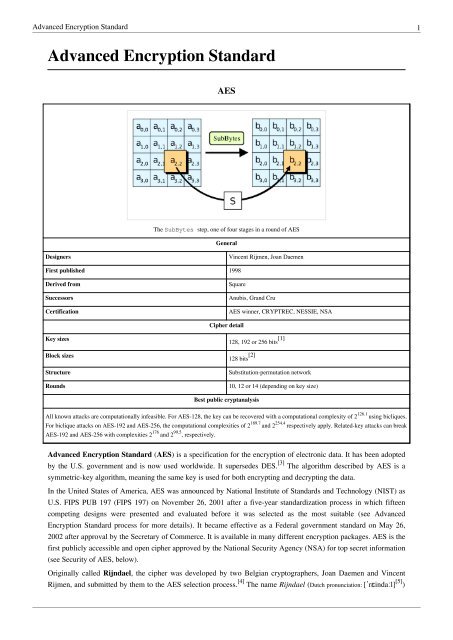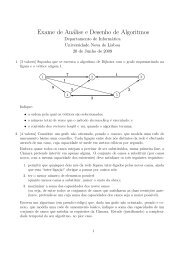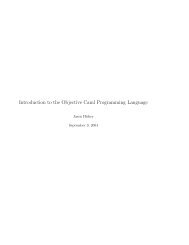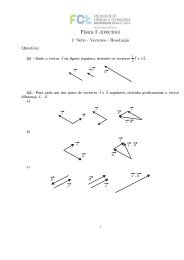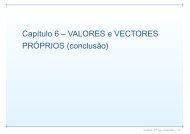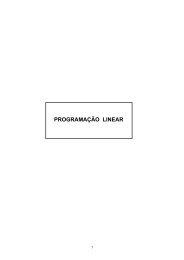Security Articles from Wikipedia
Security Articles from Wikipedia
Security Articles from Wikipedia
Create successful ePaper yourself
Turn your PDF publications into a flip-book with our unique Google optimized e-Paper software.
Advanced Encryption Standard 1<br />
Advanced Encryption Standard<br />
AES<br />
The SubBytes step, one of four stages in a round of AES<br />
General<br />
Designers Vincent Rijmen, Joan Daemen<br />
First published 1998<br />
Derived <strong>from</strong> Square<br />
Successors Anubis, Grand Cru<br />
Certification AES winner, CRYPTREC, NESSIE, NSA<br />
Key sizes<br />
Block sizes<br />
Cipher detail<br />
128, 192 or 256 bits [1]<br />
128 bits [2]<br />
Structure Substitution-permutation network<br />
Rounds 10, 12 or 14 (depending on key size)<br />
Best public cryptanalysis<br />
All known attacks are computationally infeasible. For AES-128, the key can be recovered with a computational complexity of 2 126.1 using bicliques.<br />
For biclique attacks on AES-192 and AES-256, the computational complexities of 2 189.7 and 2 254.4 respectively apply. Related-key attacks can break<br />
AES-192 and AES-256 with complexities 2 176 and 2 99.5 , respectively.<br />
Advanced Encryption Standard (AES) is a specification for the encryption of electronic data. It has been adopted<br />
by the U.S. government and is now used worldwide. It supersedes DES. [3] The algorithm described by AES is a<br />
symmetric-key algorithm, meaning the same key is used for both encrypting and decrypting the data.<br />
In the United States of America, AES was announced by National Institute of Standards and Technology (NIST) as<br />
U.S. FIPS PUB 197 (FIPS 197) on November 26, 2001 after a five-year standardization process in which fifteen<br />
competing designs were presented and evaluated before it was selected as the most suitable (see Advanced<br />
Encryption Standard process for more details). It became effective as a Federal government standard on May 26,<br />
2002 after approval by the Secretary of Commerce. It is available in many different encryption packages. AES is the<br />
first publicly accessible and open cipher approved by the National <strong>Security</strong> Agency (NSA) for top secret information<br />
(see <strong>Security</strong> of AES, below).<br />
Originally called Rijndael, the cipher was developed by two Belgian cryptographers, Joan Daemen and Vincent<br />
Rijmen, and submitted by them to the AES selection process. [4] The name Rijndael (Dutch pronunciation: [ˈrɛindaːl] [5] )


